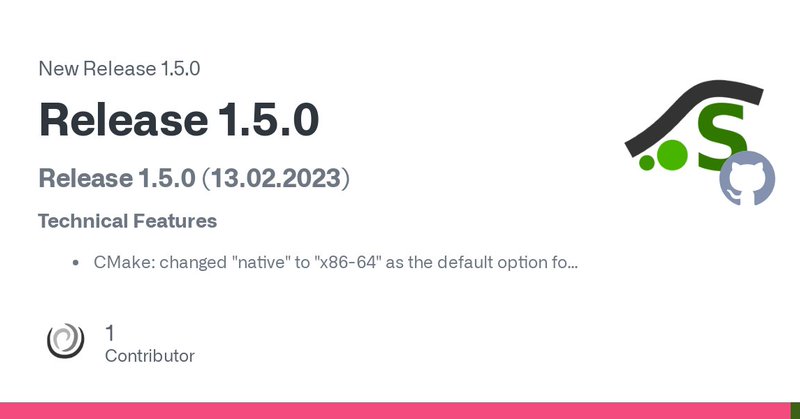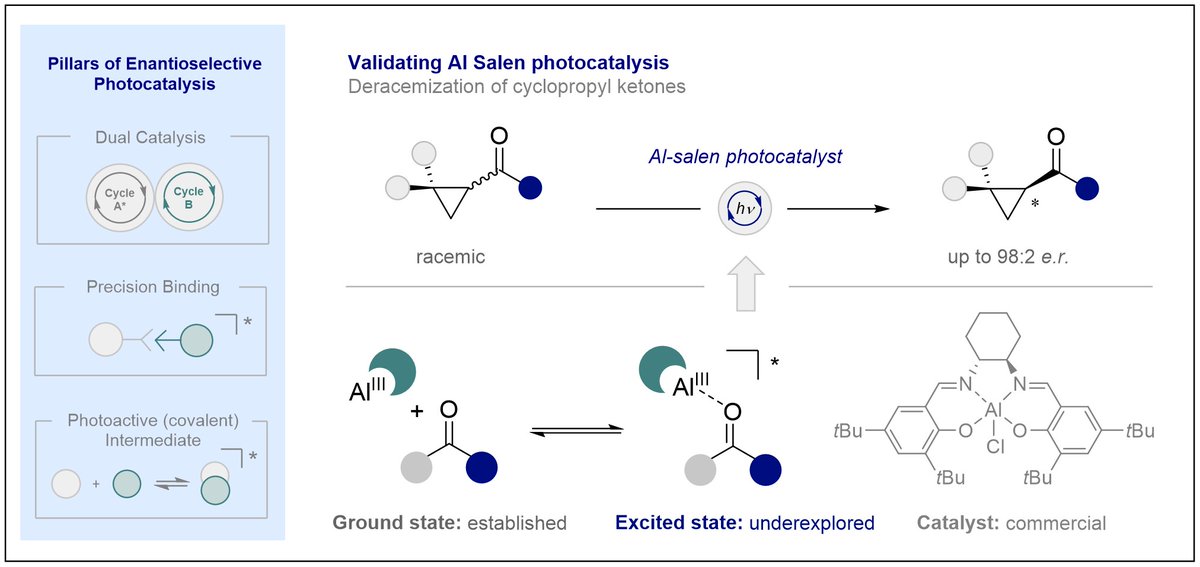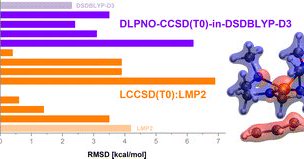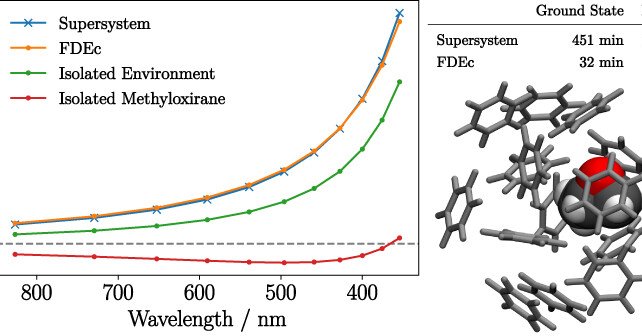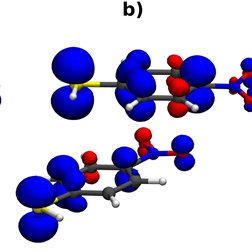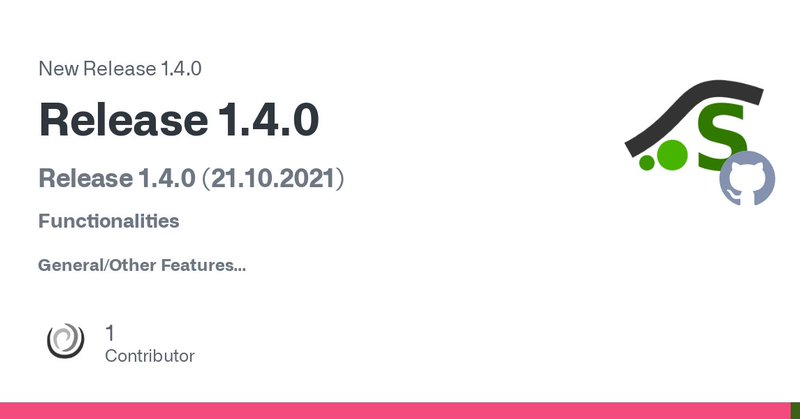
Serenity
@QCSerenity
Followers
125
Following
20
Media
3
Statuses
50
🎉Today we released Serenity v1.5.0! 🎉 .A complete list of changes and new features can be found in the link below. Thanks for all the hard work by everyone involved. #compchem.
github.com
Release 1.5.0 (13.02.2023) Technical Features CMake: changed "native" to "x86-64" as the default option for the march compile flag Dependencies Updates the default Libxc libr...
0
4
9
Recently Serenity was featured the ten year update of a subsystem DFT focussed review by Johannes and Christoph (@chjacob). Time flies when you are developing sDFT! 😄
wires.onlinelibrary.wiley.com
Subsystem DFT offers highly efficient, fully quantum-chemical descriptions of molecular properties for embedded systems, such as chiroptical properties of a chiral molecule (ibuprofen, blue) in a...
1
3
12
Congratulations and well done everyone. Happy to see this published, and even happier, Serenity could contribute.
Huge milestone for the group as our "Light Enabled Deracemization of Cyclopropanes by Al Salen Photocatalysis" is published @Nature! Congratulations to Carina, @tobiasmorack, Julia, Olga, Niklas, @LichtMuck, @GDaniliuc & Johannes! @WWU_Muenster #OpenAccess.
1
2
9
RT @CompChemNews: [JCTC] [ASAP] Correction to “Subsystem-Based GW/Bethe–Salpeter Equation”
pubs.acs.org
0
2
0
RT @FeldtMilica: First paper from the group is out in @PCCP, part of @Bench_unigoe themed collection. Great work by Zohreh together with….
pubs.rsc.org
In this work, we investigate the accuracy of the local molecular orbital molecular orbital (LMOMO) scheme and projection-based wave function-in-density functional theory (WF-in-DFT) embedding for the...
0
7
0
We have collected all the new features and written an overview of what is possible with @QCSerenity. Thanks to everyone involved. #compchem.
wires.onlinelibrary.wiley.com
Exploiting the subsystem structure of molecules and molecular aggregates is at the heart of the SERENITY program. The new version of this code features highly efficient modules for coupled response...
0
7
16
RT @JPhysChem: An extended subsystem-based method to reliably calculate isotropic EPR hyperfine couplings. A detailed study of opposing ove….
pubs.acs.org
We present a systematic benchmark of isotropic electron-paramagnetic-resonance hyperfine coupling constants calculated for radical cation and anion complexes of molecules contained in the S22 test...
0
5
0
Paper News: Reliable isotropic EPR hyperfine couplings from subsystem methods. Here Patrick (@p_esch01) and Denis study the opposing effects of overdelocalization and overlocalization in detail. #CompChem.
pubs.acs.org
We present a systematic benchmark of isotropic electron-paramagnetic-resonance hyperfine coupling constants calculated for radical cation and anion complexes of molecules contained in the S22 test...
0
4
2
Paper News: A subsystem-based toolbox for spin density-based properties. A perspective on open questions and possible developments toward challenging future applications. Well done, Patrick! #compchem
pubs.aip.org
Subsystem density-functional theory compiles a set of features that allow for efficiently calculating properties of very large open-shell radical systems such a
0
4
14
Paper News: Specialized DLPNO-CC orbital pair selection for reaction energies, based on pair correlation energy changes. Well done Moritz!.#compchem.
0
5
8
Serenity is one of the available DFT interfaces in the back end: Happy to see the support!.
github.com
Contribute to qcscine/puffin development by creating an account on GitHub.
Chemoton has made it onto GitHub! v2.0.0 is also on the PyPI. Its BSD-3 licensed, so have fun with it everyone!. Of course a huge thanks to everyone involved. This has been a long time in the making, and we are already preparing v2.1.0. #compchem.
0
1
2
RT @jctc_papers: [ASAP] Automated Generation of Optimized Auxiliary Basis Sets for Long-Range-Corrected TDDFT Using the Cholesky Decomposit….
pubs.acs.org
Range-separated hybrid functionals making use of a smooth separation of the Coulomb operator in terms of the error function and its complement have proven to be a valuable tool for improving Kohn–S...
0
2
0
Origin-independent ECD in the length-gauge representation without London atomic orbitals? Well yes, we have something new for you! Well done Niklas, and thanks to @carimarco #compchem.
0
4
8
RT @JPhysChem: Want to learn more about subsystem time-dependent density-functional theory? An overview is given in this recent Perspective….
pubs.acs.org
The theoretical understanding of photoinduced processes in multichromophoric systems requires, as an essential ingredient, the possibility of accurately describing their electronically excited...
0
2
0
Johannes and Johannes giving a perspective on TDDFT in sub- and supersystems. Many of the discussed methods can be found in @qcserenity. #compchem
pubs.acs.org
The theoretical understanding of photoinduced processes in multichromophoric systems requires, as an essential ingredient, the possibility of accurately describing their electronically excited...
0
3
4
RT @jctc_papers: [ASAP] Solvation Free Energies in Subsystem Density Functional Theory
pubs.acs.org
For many chemical processes the accurate description of solvent effects are vitally important. Here, we describe a hybrid ansatz for the explicit quantum mechanical description of solute–solvent and...
0
4
0
Serenity v1.4.0 has just been released. Thanks for all the hard work by everyone involved. New features include:. - Utilization of cholesky decomposition. - Calculations w. ext. electric fields. - Response calculations (CC2, ADC(2), . ). - .
github.com
Release 1.4.0 (21.10.2021) Functionalities General/Other Features SCF convergence thresholds were changed! The new defaults are energy convergence threshold: 5e-8 (old: 1e-8) density convergenc...
0
3
9
RT @susisle: In this piece, we point out the wide spectrum of free and open source software for computational chemistry and how it can meet….
0
12
0
Paper News: Subsystem-Based GW/Bethe−Salpeter Equation. A great collaboration within the Center For Multiscale Theory and Computation (CMTC) @WWU_Muenster. #compchem.
pubs.acs.org
Subsystem Density-Functional Theory and its extension to excited states, namely, subsystem Time-Dependent Density-Functional Theory, have been proven to be efficient and accurate fragmentation...
0
6
5

